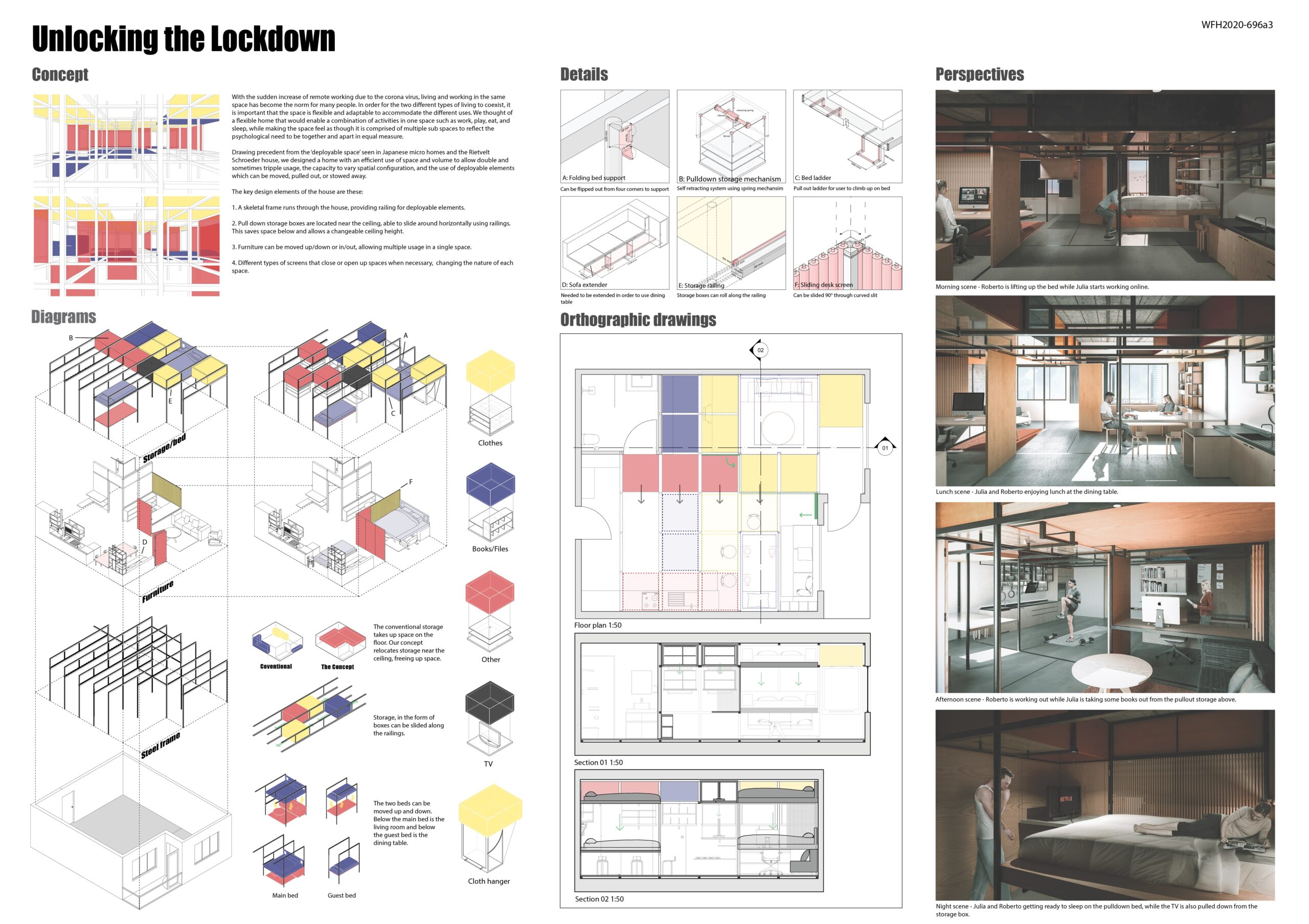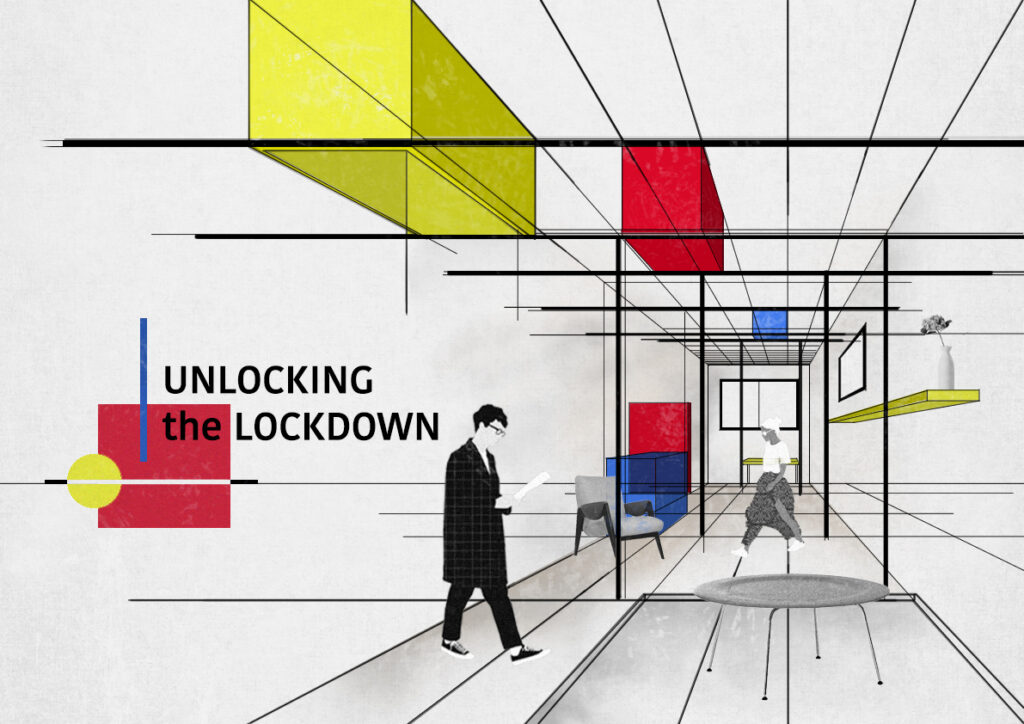The global pandemic of coronavirus is an unprecedented situation and puts a halt on many of our lives. On the other hand, it offers us the opportunity to take a step back and rethink the way we live. The living and working aspects of our lives have always been a separate one, the two lives separated physically and psychologically. The aim of this project is to explore and create a new relationship between living and working, as well as developing a domestic module that suggests a new way of living coming out of this pandemic.
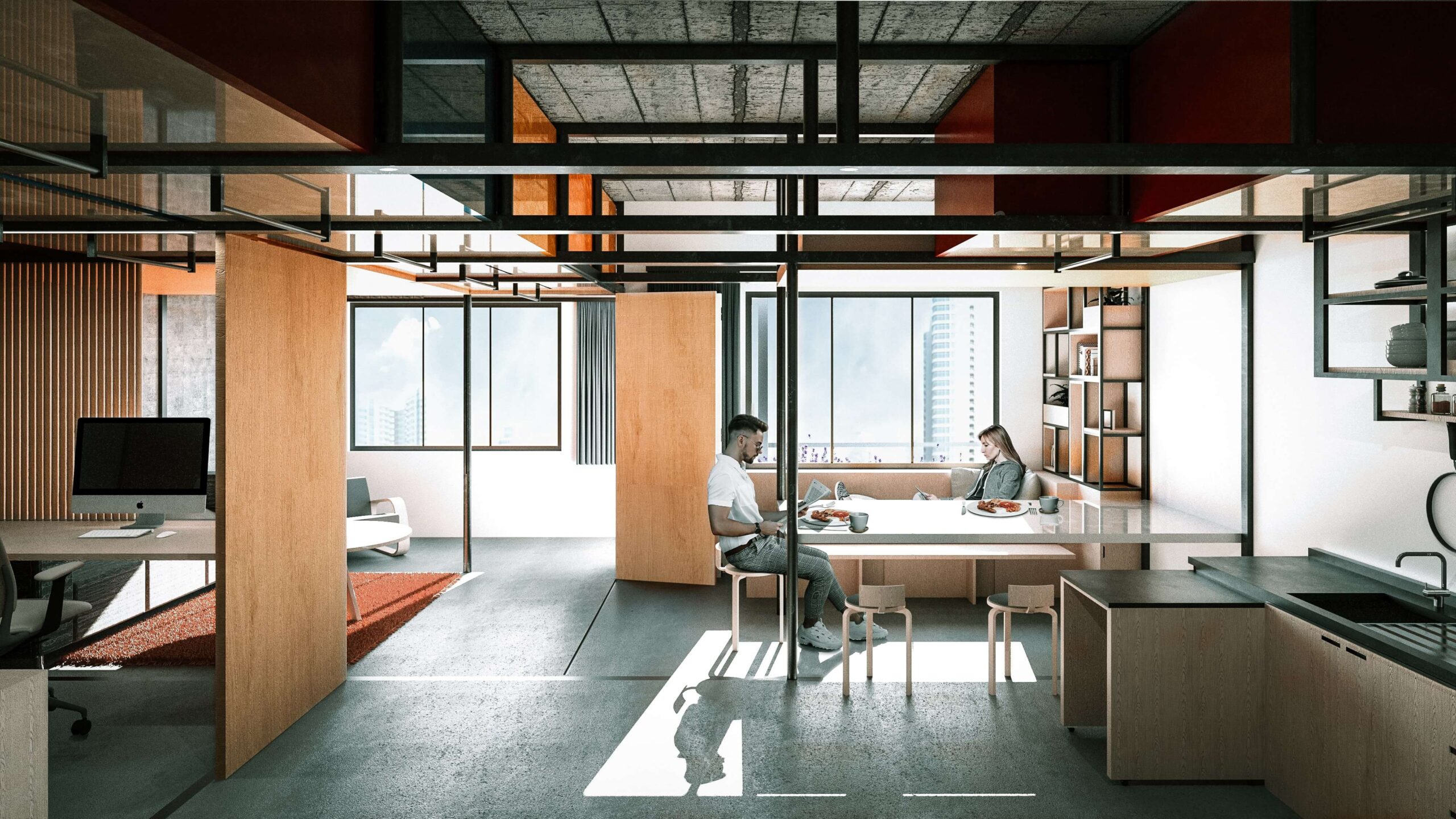
Effectively bringing together the functions of living and working in a limited space was key to the project. We looked back into the philosophy of 20th century Modernist architecture in which the function of a building is the priority, such as Le Corbusier’s idea of ‘a machine to live in’, and more specifically the Rietveld Schroeder House by Gerret Rietveld, where many elements of the house are deployable like an 'oversized intricate piece of De Stijl Furniture'. Micro spaces such as caravans and Japanese apartments were also looked at in order to create a generous space with multiple functions. A house with many deployable elements that would enable a combination of essential activities in one space, but also having multiple subspaces to reflect the psychological need to be together and apart in equal measure, seemed ideal in terms of uniting the functions of living and working.
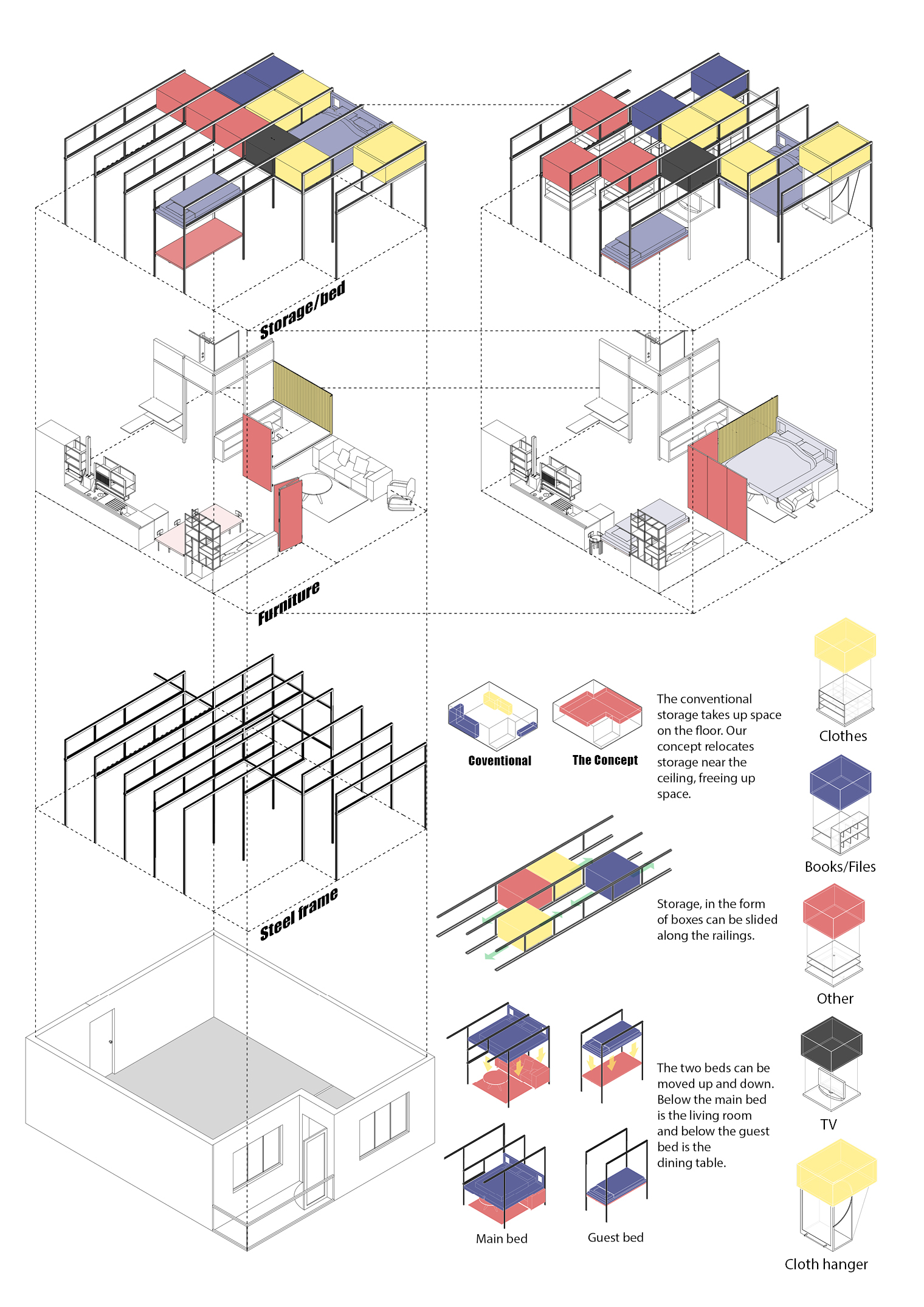
A key aspect of our design is a skeletal frame that runs through the house. The frame acts as a railing to many deployable elements such as the storage boxes, beds, and movable screens. Storage boxes can be moved horizontally on the frame, enabling a dynamic ceiling height as well as a space-saving way to store things. Different types of storage are color-coded according to their uses. Beds can be moved up and down along the frame allowing double or triple usage of a single space and volume. Movable screens allow change of space configuration, depending on which activities take place. Activities such as eating and playing require a more open space while working and sleeping need a more private one. Working at home ultimately leads to spending a large part of the day at home. Allowing users to change and tailor their space depending on their activity, mood, or preference helps them have a more dynamic and healthy lifestyle as well as enabling them to effectively carry out various activities.
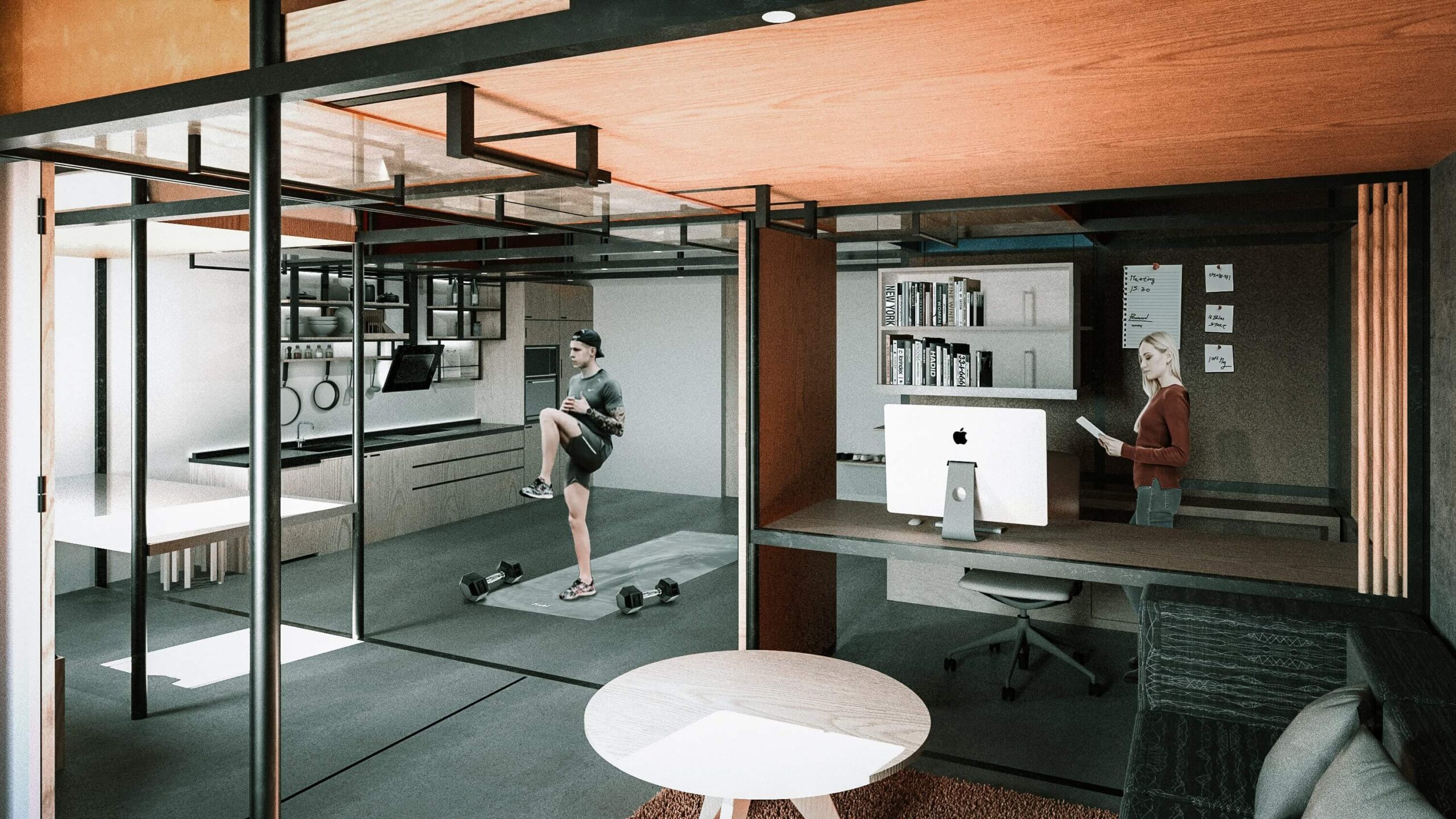
The Board:
